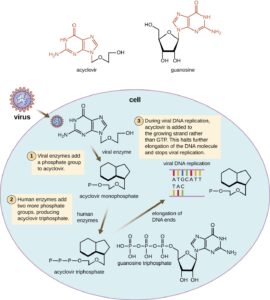Hey there today in this article we will learn about epidemiology. Before we know about the epidemiology, first we need to analyse the term epidemiology. The term epidemiology comes from a Greek word epidemios which mean “among the people” and logos, meaning “study”.
Epidemiology is a branch of microbiology in which epidemiologist are concern about the different type of disease such as AIDS, tuberculosis, and malaria, are caused by microbes.
Epidemiologist investigate disease to determine their origin, spread, and control so that we can prevent the future outbreaks.
.
Definition of Epidemiology
Epidemiology is a branch of microbiology that estimates the source, determinants, distribution, and control of health and disease in a defined human population.
In a simple language, Epidemiology is a type of study which analyze the different factors and mechanisms which involves in the spread of different disease in human population or animal or plant.
A person who studies epidemiology known as an epidemiologist. An epidemiologist will concern about the different type of health-related problems such as automobile accidents, lead poisoning, or cigarette smoking, we will limit our discussion to factors and mechanisms that concern the transmission of infectious diseases as well as their etiology, or cause, in a population.
According to CDC “Epidemiology is the study of the distribution and determinants of health-related states or events in specified populations, and the application of this study to the control of health problems”
Disease Frequency Measuring Units
The disease frequency can be measure by this following units;
Incidence and Prevalence Rates
The incidence of a disease is defined as the number of newly infected patients occurs within a set of the population during a specific time. Incidence data helps to understand the spread of disease, a Drop in the incidence data will indicate that a reduction in the spread of the disease.
The prevalence of a disease is defined as the total number of people infected within the population at any time. The prevalence data will help us to understand how serious and how long the disease is affecting a particular population.

Morbidity Rate
The morbidity rate defined as the total number of persons is infected by a disease within a period in a particular population. It usually expressed as the number of total disease affected individuals per 100,000 people per year.

Mortality Rate
The mortality rate of a disease is defined as the total number of deaths occurs due to the disease within a particular population in a short period. The mortality rate of a disease is usually expressed by the total number of deaths occurs per 100,000 people per year.

Disease Type
Based on geographic areas affected and the degree of harm the diseases cause in the population the disease is classified into endemic, epidemic, pandemic, or sporadic.
Endemic Definition In Microbiology
In epidemiology, the disease will be called endemic if the disease is present continuously in the population of a particular geographic region but both the count of reported cases and the severity of the disease remain too low to create a public health problem.
Example: Mumps is endemic in the entire United States, and valley fever is endemic in the southwestern United States.
Hey there today in this article we will learn about epidemiology. Before we know about the epidemiology, first we need to analyse the term epidemiology. The term epidemiology comes from a Greek word epidemios which mean “among the people” and logos, meaning “study”.
Epidemiology is a branch of microbiology in which epidemiologist are concern about the different type of disease such as AIDS, tuberculosis, and malaria, are caused by microbes.
Epidemiologist investigate disease to determine their origin, spread, and control so that we can prevent the future outbreaks.
.
Epidemic Definition In Microbiology
In epidemiology, a disease will be called an epidemic, if the disease suddenly occurs in a higher-than-normal incidence in a population. In an epidemic, the morbidity rate or the mortality rate or both become higher which can produce a public health problem.
An Endemic disease can be converted into an epidemic, if the disease-causing virulent strain of a pathogen appears in a large number when most of a population lacks immunity.
Example: In 1998, Cholera disease was epidemic in Madras
Pandemic Definition In Microbiology
In epidemiology, a disease will be called Pandemic, when an epidemic spread worldwide. The Pandemic disease can be spread across a large region, for instance, multiple continents or worldwide.
Example: COVID-19 is a current pandemic. There is also another disease that was played as a pandemic in the past such as seasonal influenza, Cholera, Typhus, Smallpox, Measles, Leprosy, Malaria, Tuberculosis.
Sporadic Definition
In epidemiology a disease will be called Sporadic, if the disease occurs randomly and unpredictably, involving several isolated cases that pose no great threat to the population as a whole.
Example: Eastern equine encephalitis (EEE) is a sporadic disease in the Americas.
Outbreak Definition
An outbreak is defined as the sudden and unexpected occurrence of a disease. In the outbreak, the number of cases of a disease is suddenly increased.
Example: Legionnaires’ disease.



